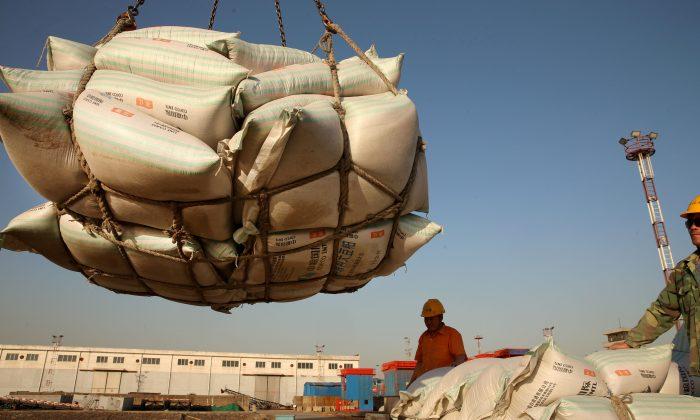Beijing on Sept. 12 indicated that it was looking to buy more U.S. agriculture products as its politically sensitive food inflation rate rose to an eight year high of 10 percent.
China is the world’s largest agricultural producer, importer and consumer. But its agricultural exports fell by 27 percent over the last decade, raising food security fears.
With most commercial frozen pork stocks already consumed, Chinese Vice Premier Hu Chunhua reportedly told top officials at a meeting in late August that increasing pork production was “major political task.”
At least four cities or provinces have started tapping into its emergency frozen pork reserves, while other regions are rationing pork in the run-up to the “Golden Week” celebrations from Oct. 1 to Oct. 7 marking the 70th anniversary of the founding of the People’s Republic of China.
Beijing has also announced plans for subsidies and offer better crop production insurance payments to boost agriculture production and guarantee supplies.
Due to the U.S.-China trade war, Beijing announced plans to address ASF by tripling pork imports from Brazil. But Brazil has limited supply capacity with a 3.8 percent share of global pork exports, compared to the United States with a 16.2 percent export share.
China’s Ministry of Commerce said Sept. 12 that Chinese companies have started making inquires about prices of American agricultural products including soybeans and pork. The regime pledged to buy more U.S. farm products as part of a cease-fire agreement reached at the sidelines of the G-20 Summit in Japan in late June, but failed to follow through on this prompting Trump to slap tariffs on around $300 billion of Chinese goods.
In-person talks between top Chinese and U.S. trade negotiations are scheduled for October in Washington.
The United States is looking for a trade deal that would also liberalize American business access to China’s domestic markets, improve intellectual property protection, and cut China’s excess industrial capacity in steel and aluminum.
The timing of Beijing’s indiction that it would buy U.S. farm products comes as the El Niño warming of the tropical Pacific Ocean temperatures have faded back to neutral. As a result, eastern China expects lower rainfall which would reduce crop yield.






Friends Read Free